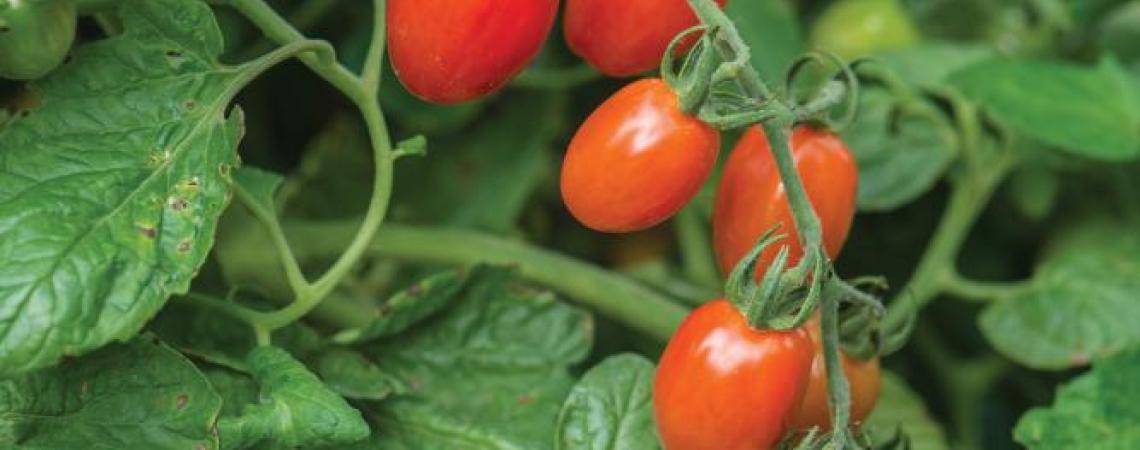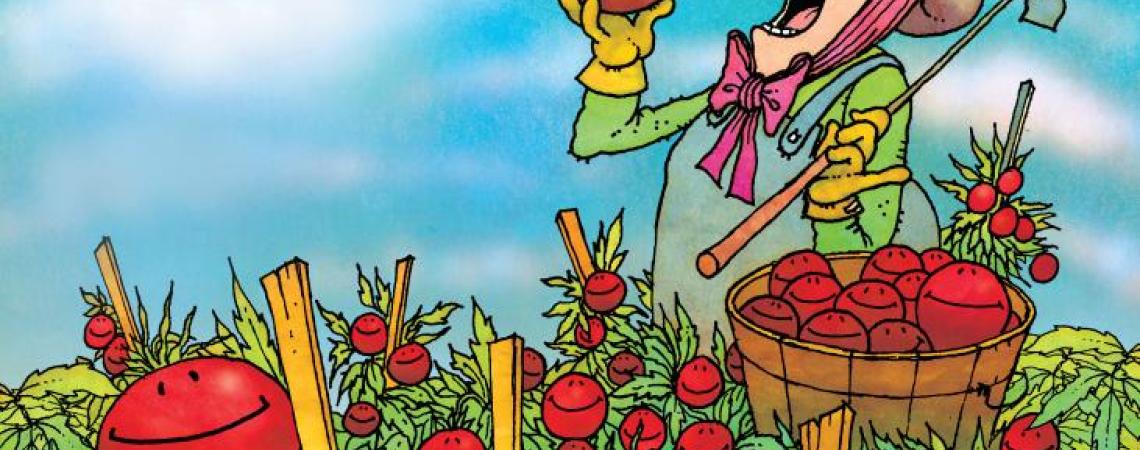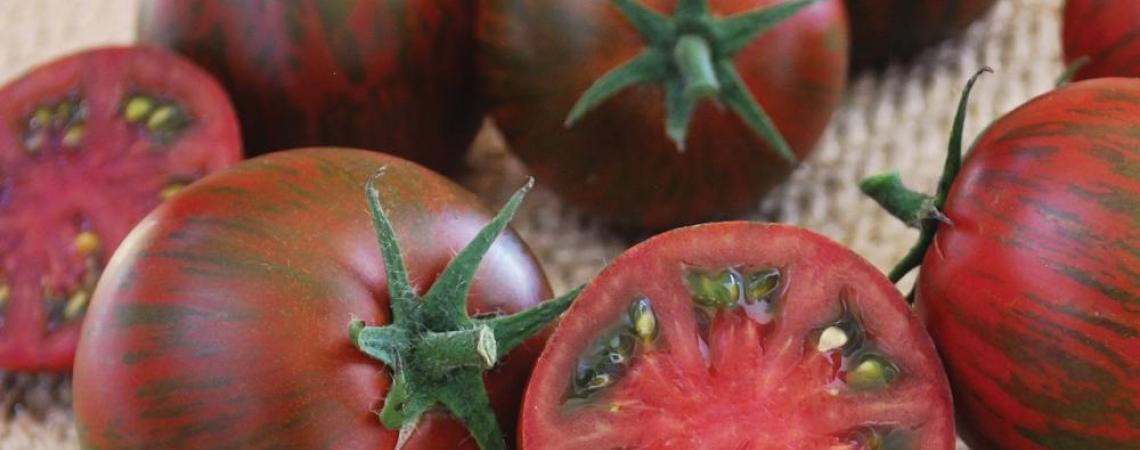Tired of losing tomatoes to unwanted garden pests? Worried you’ll need to sacrifice excellent taste for improved yield? Take a deep breath and relax: This year, you can have your tomato and eat it, too. With the help of a few new varieties and field-proven tactics, you’ll be on your way to growing the best tomato crop yet.
Early Resilience is a fantastic selection for canning enthusiasts.
If you want to grow delicious, homegrown tomatoes this year, simply focus your attention on these three stages of gardening: planning, preparing, and protecting.
Stage 1: Plan
Planning for a successful tomato harvest starts with choosing the right varieties to grow in your garden.
Many gardeners claim that if you want great flavor, you’ll need to plant heirloom varieties. People selected these landrace tomato plants long ago for traits such as shape, size, and taste, so the claim has a basis. In pursuit of a better-tasting tomato, however, significant factors like resistance to insects and disease resistance were overlooked.
If you’ve grown heirlooms, you know how challenging the process can be. This bittersweet truth has left many gardeners wondering if old-timey taste is a thing of the past. Well, there’s good news. Consumer demand for resilient, flavorful tomatoes has not fallen on deaf ears. Plant breeders have come up with several improved tomato varieties — but with so many options available, how do you make the best choice?
A nonprofit organization called All-America Selections (AAS) may have the answer. The group tests new varieties before they hit the market, and their trial notes will tell you everything you need to know.
How does it work? Professional horticulturists across the country volunteer to grow test plots of new tomato varieties and compare notes on disease resistance, yields, and taste alongside established varieties.
“Our judges rate taste and texture first, then everything else second,” says Diane Blazek, executive director of All-America Selections and the National Garden Bureau. “You can have the most prolific, cute, unique new tomato, but if it doesn’t taste good, nobody wants it.”
Stage 2: Prepare
Proper site selection and planting techniques are vital to tomato gardening success.
Your tomato garden needs access to full sun (6 to 8 hours a day) and should have good drainage. Tomato plants hate wet feet and often succumb to root rot when left in waterlogged soils. They do, however, need regular watering throughout the growing season, so select a spot with easy access to water. Irrigating deeply but infrequently strengthens plants and encourages deep, healthy root systems for hot summer days.
Avoid using a place where tomatoes, potatoes, peppers, eggplant, and other solanaceous crops have been grown within the past three years. Many pests overwinter in the soil adjacent to plants and will terrorize unsuspecting gardeners.
Once you’ve selected the right spot, make sure to test your soil and amend the ground as indicated. Your local extension agent can help you arrange a test and interpret the results. Tomatoes are nutrient hogs that require a good supply of nutrients from start to finish, so you’ll likely need to fertilize before and during the growing cycle.
Adequate moisture is necessary for nutrient uptake. Drip irrigation works well and doesn’t soak leaves, which often leads to disease issues.
And don’t forget to deal with weeds. They are an often-overlooked source of tomato pests. After clearing the site of any weeds, spread mulch 3 to 4 inches deep and keep it a palm-width away from the bases of tomato stems.
Tomatoes should be planted after the last frost, according to The Ohio State University’s College of Food, Agricultural, and Environmental Sciences. In central Ohio, the ideal planting time is around May 20. In the southern part of the state, it’s one to two weeks earlier, and to the north, it’s a week later.
Stage 3: Protect
Like the rising of the sun, pests — insects and diseases — are to be expected in every garden. The good news: They can be controlled or even avoided using integrated pest management (IPM), a commonsense approach to gardening that treads lightly on the environment and minimizes use of garden chemicals.
Monitor and identify. Get to know your garden and what lives in it. Talk to your local extension agent for a precise understanding of the insects and diseases to watch out for. Remember that beneficial insects like praying mantis and lady beetles naturally keep damaging insects in check. Don’t resort to pesticides at the first sign of something that flies or crawls.
Make an evaluation. If you do spot harmful pests or damage on tomatoes, evaluate whether real damage is being done to the landscape. They may be annoying, but small pest populations can often be tolerated. Set thresholds to guide your treatment decisions. For example, you may decide there’s little benefit to treating a pest problem if there is less than 10% damage to the plant.
Choose a wise treatment. If treatment is necessary, use the least toxic measure first. Cultural methods such as proper watering, plant spacing, and fertilization can help prevent or reduce the number of pests. Mechanical means are another option that requires the physical removal of pests and can be useful for small populations. For example, hornworms are easily removable by hand-picking, and aphids are often washed away by a good squirt from a water hose.
If these approaches fail, reach out to your local extension agent for advice on pesticides and follow all label directions. Pesticide labels are the law, and many chemicals may be unethical or even illegal to use on fruit-bearing plants. Err on the side of caution.
Heirlooms for Ohio
Here are a few AAS winning tomato varieties to consider growing this season. To find seed suppliers and garden centers that carry these and other AAS-recommended varieties, visit www.all-americaselections.org/buy-winners.
Purple Zebra. If you want a tomato that looks just as good as it tastes, search no more. According to AAS, Purple Zebra is a national winner with fruit that is “firm in texture, complex in flavor and has a taste more sweet than acidic.” This variety has high resistance to tomato mosaic virus, verticillium wilt, fusarium wilt, and late blight. Start seeds indoors 4 to 6 weeks before the last frost for best results. In the garden, space transplants no less than 2 feet apart or, if using containers, select 5-gallon pots with drainage. This variety produces 150 to 200 green-striped, purple tomatoes and requires staking. Most gardeners can begin harvesting tomatoes 80 to 85 days after transplant.
Celano. Another national winner, Celano, is an early-producing, high-yielding grape-type tomato for your patio or garden. According to AAS trial notes, Celano developed fruit much earlier and produced much longer than comparable varieties. Deep-red, oblong tomatoes typically weigh a little over half an ounce and taste sweet. As for disease resistance, this variety has superior tolerance to late blight. Transplants should be spaced at least 2 feet apart in the garden and will benefit from staking.
Early Resilience. Another national winner, Early Resilience, is a fantastic selection for canning enthusiasts. Each plant will produce roughly 25 tomatoes with good-quality flesh and excellent flavor. This variety displays high resistance to blossom-end rot and numerous diseases. From transplant, gardeners can expect to harvest tomatoes after 70 to 115 days. For best results, space each plant at least 2 feet apart. Staking may help but is not required.













